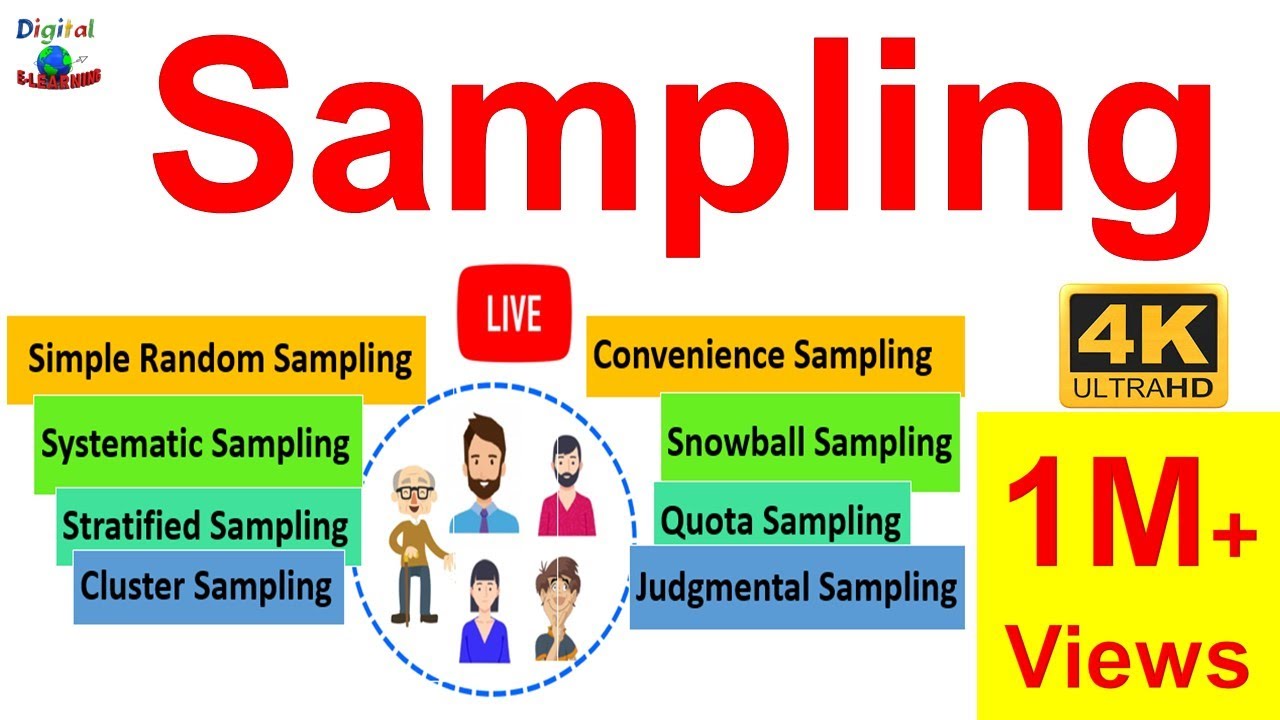RUN Test - Non Parametric Test for Small and Large Samples
Summary
TLDRThis video explores a variety of topics including statistical testing methods, probability, and random sampling, mixed with references to social media engagement and everyday life. It covers important concepts in statistics, such as hypothesis testing, significance levels, and sample collection, and also touches upon random processes in real-world applications. The script encourages viewers to engage with the content through likes, shares, and subscriptions, while providing examples related to data analysis, statistical inference, and more, all aimed at simplifying complex concepts for the audience.
Takeaways
- 😀 The script contains a mix of topics, ranging from statistics, sampling methods, to promotions and random tests.
- 😀 Random sampling and statistical testing are central themes, discussing the significance of random selection and sample testing in research.
- 😀 There's a focus on various types of tests, such as t-tests and random sampling, used to verify hypotheses in different contexts.
- 😀 A portion of the script discusses sample collection methods, including water, food, and other environmental samples for testing.
- 😀 The script references using statistical methods to evaluate the validity of results, such as mean and variance calculations.
- 😀 Educational elements are present, referencing a variety of tests, formulas, and calculations for understanding data science and statistics.
- 😀 The importance of verifying results and understanding the randomness of sample selection is emphasized throughout.
- 😀 References to popular media (e.g., Bigg Boss, Indian politics) are mixed with technical discussions, creating an informal, multi-topic dialogue.
- 😀 Multiple calls to action for viewers to subscribe, like, and share the content appear throughout the transcript.
- 😀 A blend of technical terms and everyday language is used, making the content somewhat difficult to follow but providing a wide range of concepts.
- 😀 The script appears to be part of an educational or promotional video, featuring random tests, probabilities, and applications in various fields like education and media.
Q & A
What is the main focus of the video transcript?
-The video transcript primarily discusses various statistical concepts, such as random sampling, probability, and statistical tests, particularly focusing on the significance of sample data and its analysis using different statistical methods like hypothesis testing and significance levels.
What does the transcript mention about random sampling?
-The transcript emphasizes the importance of random sampling in ensuring the representativeness of a sample. It discusses how random samples are drawn from a population to make inferences about the population's characteristics and how this process is central to hypothesis testing and statistical analysis.
What is the role of sample size in statistical analysis according to the transcript?
-The transcript highlights that the sample size plays a crucial role in determining the reliability and accuracy of statistical analysis. It mentions how larger sample sizes tend to provide more reliable results and can influence the significance of statistical tests.
How does the transcript describe hypothesis testing?
-Hypothesis testing is described as a process used to assess the validity of an assumption or claim about a population. The transcript mentions conducting tests like t-tests or z-tests to determine whether the sample data supports the hypothesis, often by comparing p-values with significance levels.
What are the challenges mentioned in the transcript regarding statistical tests?
-The challenges discussed include determining the appropriate sample size, the complexity of interpreting results, and the possibility of errors such as Type I and Type II errors in hypothesis testing. Additionally, the transcript touches upon issues like non-normal distributions and how they affect the accuracy of statistical methods.
What is the significance of 'significance levels' in the transcript?
-Significance levels (alpha) are crucial in determining whether the results of a statistical test are considered statistically significant. The transcript references how a significance level is chosen to assess whether to reject or fail to reject a null hypothesis, with a common value being 0.05.
How does the transcript suggest handling data with normal distribution?
-The transcript suggests that when data follows a normal distribution, standard statistical tests like t-tests or z-tests are appropriate. It also mentions the assumption of normality being essential for certain types of analyses to be valid and accurate.
What example does the transcript give to illustrate statistical sampling techniques?
-An example mentioned in the transcript is the collection of water samples from different locations, where the samples are randomly chosen from various points within a population (e.g., water samples from different parts of a city) to ensure unbiased results and a representative sample.
What is the importance of probability theory in the context of this transcript?
-Probability theory is crucial in the transcript as it forms the foundation of statistical analysis, especially in understanding the likelihood of events occurring under certain conditions. The transcript discusses how probability is used to model and analyze random variables and outcomes in statistical tests.
What is the conclusion or key takeaway from the video transcript?
-The key takeaway from the video transcript is the importance of proper statistical techniques, such as random sampling, hypothesis testing, and probability theory, in making informed decisions and drawing valid conclusions from data. The transcript also underscores the need for careful interpretation of statistical results to avoid errors and misconceptions.
Outlines

此内容仅限付费用户访问。 请升级后访问。
立即升级Mindmap

此内容仅限付费用户访问。 请升级后访问。
立即升级Keywords

此内容仅限付费用户访问。 请升级后访问。
立即升级Highlights

此内容仅限付费用户访问。 请升级后访问。
立即升级Transcripts

此内容仅限付费用户访问。 请升级后访问。
立即升级浏览更多相关视频

What is sampling | Probability vs Non Probability sampling | Methods | Types & Technique Explained

Teknik Sampling

Sampling: Sampling & its Types | Simple Random, Convenience, Systematic, Cluster, Stratified

Pengantar Statistika 1

STATISTIKA PENDIDIKAN PERTEMUAN 1-PENGANTAR STATISTIKA DAN STATISTIK

Sampling Methods 101: Probability & Non-Probability Sampling Explained Simply
5.0 / 5 (0 votes)
